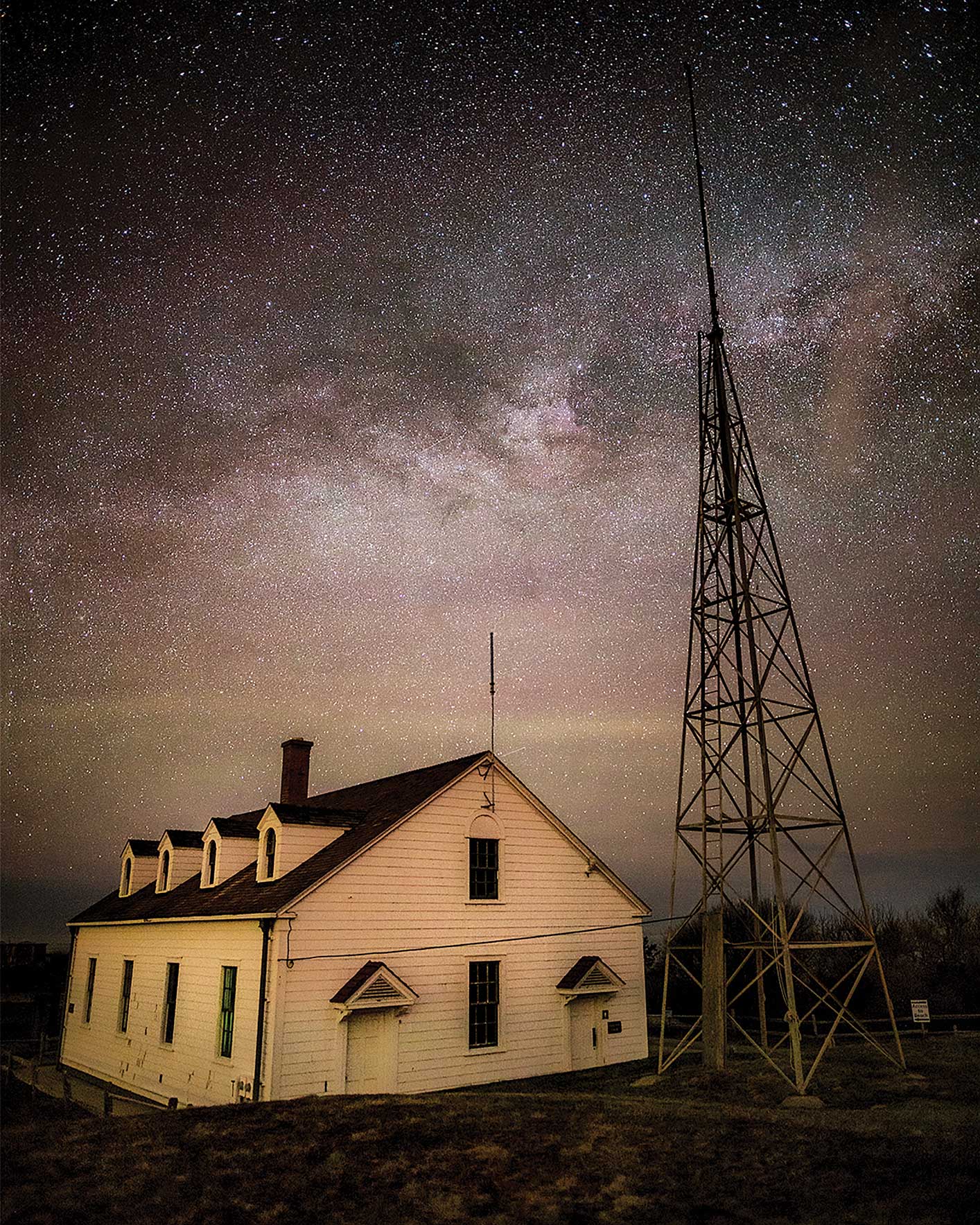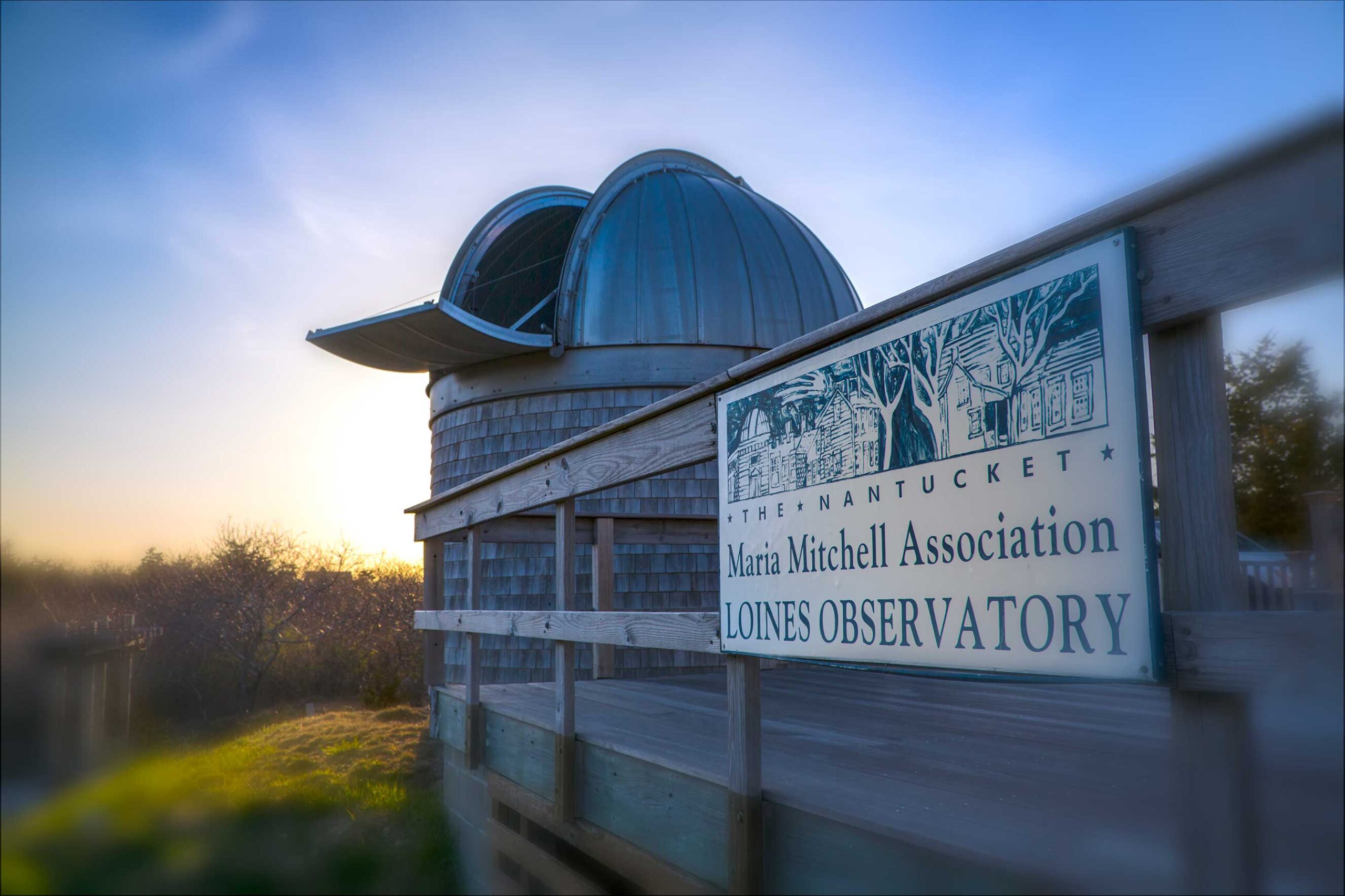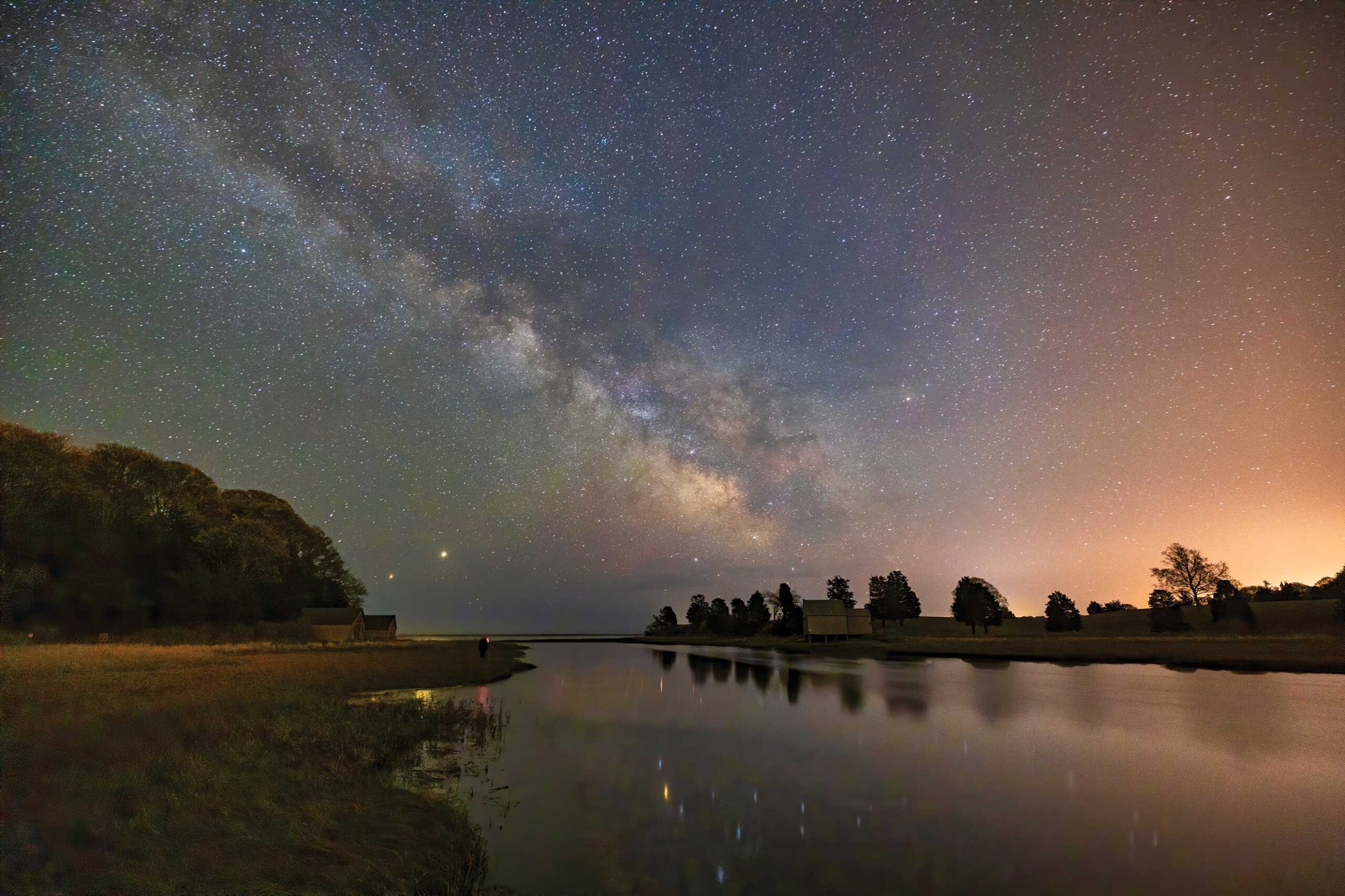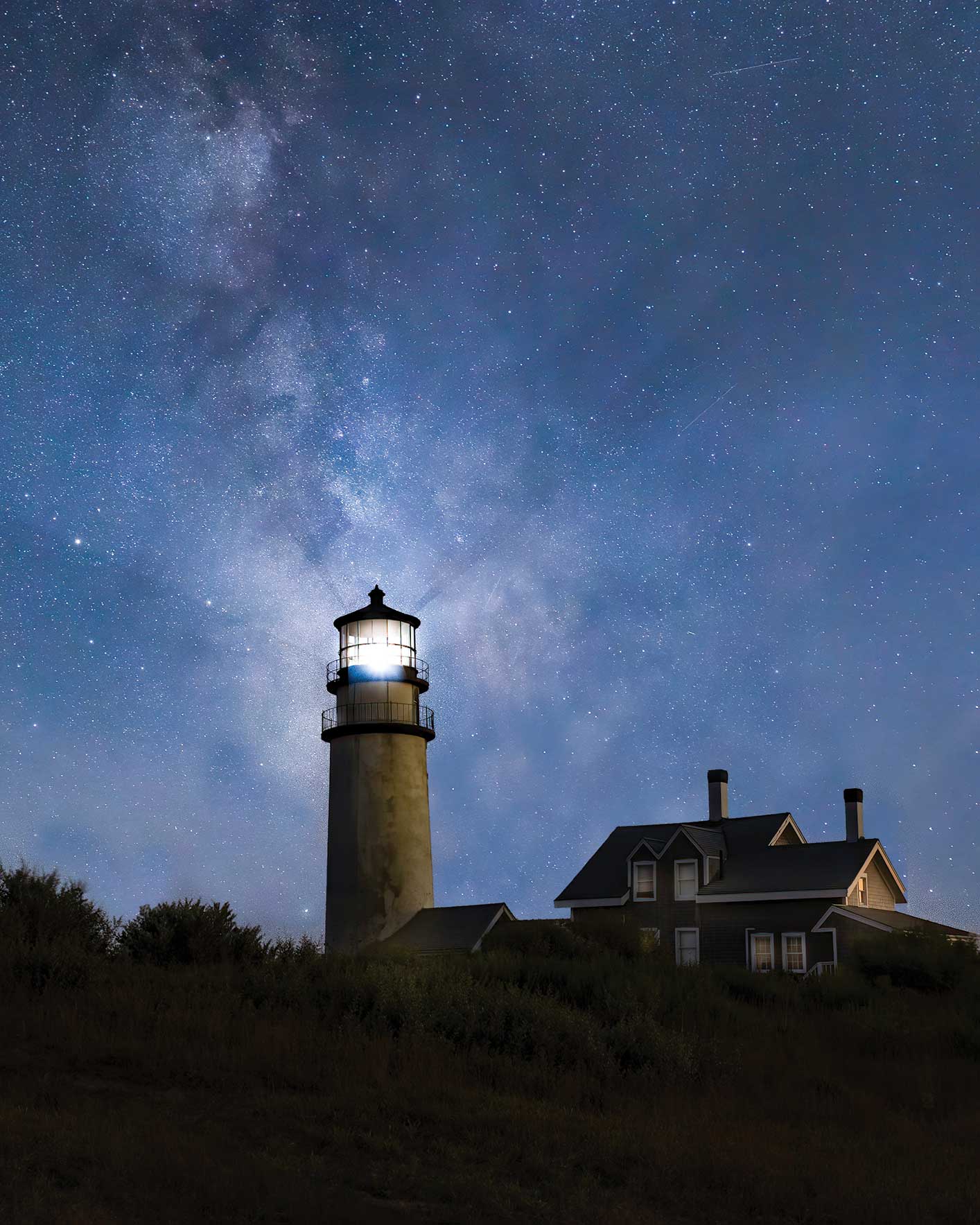The Night Sky is Shining
A Guide to Stargazing on the Cape and Islands
by Lisa Cavanaugh
Renowned American astronomer and author Carl Sagan firmly believed that we humans are all “made of star-stuff” and that we can know ourselves best by looking at the cosmos. After a long spring of spending so much time indoors, taking the opportunity to find a dark, quiet spot somewhere on the Cape Cape, Martha’s Vineyard, or Nantucket to gaze upwards at the moon and constellations may be just the ticket for reaffirming our connectedness to the universe.
Jutting out into the Atlantic Ocean, and without distracting light from major urban centers to mask the nighttime view, Cape Cod is an ideal stargazing locale. There are numerous places across the Cape and on Nantucket and Martha’s Vineyard that can prove to be ideal for spending a clear evening looking at the sky.
Peter Kurtz, a member of the observatory staff of the Cape Cod Astronomical Society, which sponsors regular public “star parties” at the Werner Schmidt Observatory at Dennis Yarmouth High School, recommends heading to any of the National Seashore beaches at dusk on clear nights. “Plan to observe the sky either from the parking lot or go down to the beach itself,” says Kurtz. “ Hearing the surf crashing in the dark adds to the fun.”
The National Seashore beaches, include Coast Guard and Nauset Light in Eastham, Marconi in Wellfleet, Head of the Meadow in Truro, and Race Point Beach and Herring Cove Beach in Provincetown. Kurtz advises calling the National Park Service or visiting the National Seashore website to confirm which parking lots will be open after dark this summer.


On Nantucket, the Maria Mitchell Association (MMA) is the island’s center of astronomy. Born on Nantucket in 1818, Maria Mitchell was America’s first professional female astronomer, who, while serving as the Nantucket Atheneum’s first librarian, discovered a comet through a telescope, and the association named after her continues her educational work. “We are the observatory on Nantucket, so we feel this is the best place to come to see the night sky,” says Dr. Regina Jorgenson, the association’s director of astronomy. The Loines Observatory at 59 Milk Street Extension is usually open in the summer every Monday and Wednesday night from 9 p.m. until 10:30 p.m., clear-weather permitting, for a guided tour of the night sky and telescopic observations of the moon, planets, nebulae, galaxies, and more.
But since the facility has been closed for several months due to Covid-19 precautions, Jorgenson recommends that interested stargazers check the MMA website regularly for updates. “We are hoping that we will be able to open some of our facilities at some point in the summer, but of course, I can also suggest finding any dark outdoor spot with limited to no lighting,” she says. “On Nantucket we are really lucky because the island is surrounded by beaches, almost all of which fit that description.”

“The nitrogen in our DNA, the calcium in our teeth, the iron in our blood, the carbon in our apple pies were made in the interiors of collapsing stars. We are made of starstuff.”
— Carl Sagan
Photographer Betty Wiley captures night falling over Salt Pond in Eastham.

Jorgenson stresses that it’s very important to minimize light pollution when trying to observe the night sky. “Any sort of light, either from improperly shielded street lamps, to front porch lighting, to mobile phones, will ruin your night vision, making it very difficult to impossible to see relatively faint objects in the sky.” She cautions that it can take your eyes about five to seven minutes to become adapted to the dark, so you will want to avoid looking at your phones or any other lighting when you head out to observe the stars.
Whether you find yourself at the National Seashore, on Nantucket, or have made your way to one the region’s higher vantage points, such as Gay Head cliffs on Martha’s Vineyard, be sure to plan for some of this summer’s more interesting astronomical events (see sidebar). Dr. Jorgenson suggests to watch out for Jupiter at opposition on July 14 when the planet will be at its closest approach to Earth and will be fully illuminated. “This is the best time to observe Jupiter, and even binoculars will do for seeing it,” she says. Jorgenson also urges stargazers to seek out the Perseids meteor shower on the night of August 11 into August 12. “This is one of the best meteor showers,” she says. “You can see up to 60 meteors per hour.”
No matter how you seek out the stars this summer, and there are approximately 2,500 to 5,000 in our galaxy that are visible to the naked eye, remember much of what we can see is light from the past. The three bright stars that make up the so-called Summer Triangle, (which can be observed in the Northern Hemisphere throughout the summer months) Altair, Vega, and Deneb, are 16.7, 25, and 2,600 light years away from earth, respectively. Gazing at the starlight created years ago may help us keep perspective about any challenges we are facing today and the magnitude and beauty of the night sky can inspire us for the future.
Summer 2020
Astronomical Events
July 5:
Penumbral Lunar Eclipse
A penumbral lunar eclipse occurs when the moon passes through the Earth’s partial shadow, or penumbra. During this type of eclipse, the moon will darken slightly but not completely.
July 14:
Jupiter at Opposition
Jupiter is at its closest approach to Earth and fully illuminated.
July 20:
Saturn at Opposition
Saturn is at its closest approach to Earth and fully illuminated.
August 3:
Sturgeon Full Moon
Early Native American tribes referred to the August Full Moon as the Sturgeon Full Moon because the large sturgeon fish of major lakes were more easily caught at this time of year. Other names for this full moon, include Grain Moon, Green Corn Moon, Fruit Moon, and Barley Moon.
August 11 and 12:
Perseids Meteor Shower
A meteor shower is actually pieces of comet debris heating up as they enter the atmosphere and creating bright bursts of light in a path across the sky. The Perseids is best observed after midnight.
For more information and updates:
capecodastronomy.org
mariamitchell.org
Photographs courtesy of the Maria Mitchell Association and
taken through the observatory’s telescope.


